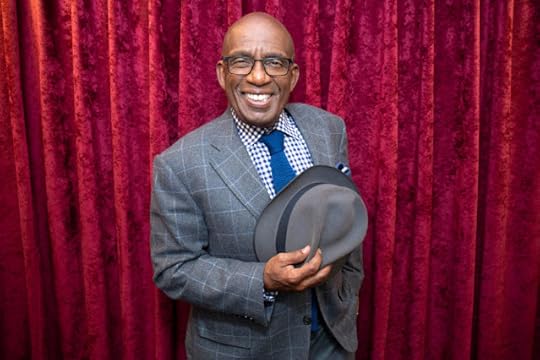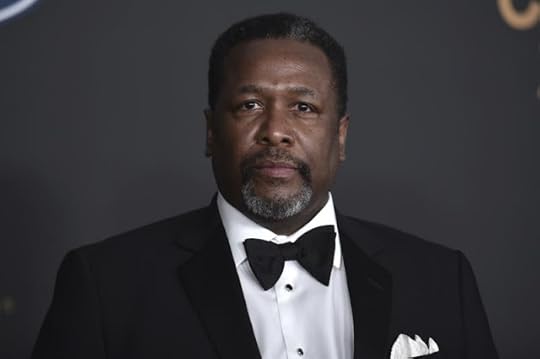Mark Anthony Neal's Blog, page 175
September 4, 2021
Bill Stephney aCey Adams on the Smithsonian Anthology of Hip-Hop and Rap

'The Smithsonian has released a new box set condensing four decades of hip-hop history into nine CDs and one 300-page book. Bill Stephney , former Def Jam executive, served as a member of the anthology’s executive committee alongside Chuck D, Questlove, music scholars such as Bill Adler, and others. Artist and former Def Jam creative director Cey Adams advised and curated the box set’s design. They join All Of It to discuss the Smithsonian Anthology of Hip-Hop and Rap .'
'Summer Of Soul': South African Trumpeter Hugh Masekela

'Hugh Masekela, who died in 2018, was a symbol of South Africa's anti-apartheid movement. He performed around the world, including at the 1969 Harlem Cultural Festival. This interview with Fresh Air was originally broadcast in 1988.'
Al Roker Shares Life Lessons In New Memoir, 'You Look So Much Better In Person'

'He's been telling faithful viewers the weather for four decades. He has his own entertainment company, hosted a show on The Weather Channel and has written several bestselling books. So of course, he’s learned a few things along the way. Now, Al Roker is sharing some of those lessons in a memoir, You Look So Much Better in Person: True Stories of Absurdity and Success.' -- Here & Now
Wendell Pierce Reflects on Hurricane Ida

'Hurricane Ida made landfall in late August 2021 and the stories of escape and damage are still coming out. New Orleans native son and actor Wendell Pierce joins The Takeaway to discuss his attempt to get his father to safety ahead of the storm, the destruction of an important jazz landmark, and his efforts to continue revitalizing his beloved city.'
Barbershop Medicine: Why COVID-19 has Hit the Black Community So Hard

'The barbershop is where people go to fellowship and talk about social issues. Dr. Italo Brown and Dr. Cedric Rutland stop by their local barbershop to talk about COVID-19 and the vaccine; answering questions about how COVID has hit minority communities so hard and the vaccine’s safety.' -- American Public Health Association
Artist Bisa Butler on Creating New Narratives through "Portrait Quilts"

'Artist Bisa Butler has been called a modern-day Griot – but instead of using words to tell stories, she uses stitches and cloth. Her quilts have graced the covers of magazines and she created the striking illustration for the soon-to-be-released book Unbound, the memoir of activist and Me Too movement founder Tarana Burke. Nancy Chen of CBS Mornings reports.'
September 2, 2021
Fixing New York City’s Homelessness Crisis Is An American Priority by Dr. Benjamin F. Chavis, Jr.
 Fixing New York City’s Homelessness Crisis Is An American Priority
Fixing New York City’s Homelessness Crisis Is An American Priority
by Dr. Benjamin F. Chavis, Jr. | @DrBenChavis | NewBlackMan (in Exile)
I congratulate New York City's Democratic mayoral nominee, Eric Adams. He will be a strong new mayor of our nation’s largest and most diverse city. Adams has promised to address homelessness in the city, a problem that has grown increasingly desperate as the COVID-19 pandemic continues to cripple the economy and drive record numbers of individuals into bleak and unwelcoming shelters. In May 2021, almost 52,000 New Yorkers – including 15,930 children – were sleeping in shelters, the highest rate of homelessness the city has experienced since the Great Depression. Worse still, homeless families are often forced to live in deplorable conditions, including shelters with mold and mildew, mouse and roach droppings, poor heating, bed bugs, asbestos, and broken bathrooms. This is not what Mayor Bill de Blasio had in mind when he brought new leadership into the city’s Department of Homeless Services (DHS) in 2016 after ordering a comprehensive review of the homeless policies and of conditions at city shelters. As part of that overhaul, the mayor appointed Steven Banks to lead the Department of Homeless Services (DHS). Banks, a veteran Legal Aid attorney who de Blasio had tapped in 2014 to be commissioner of the city’s Human Resources Administration, was widely praised at the time as the right person to champion the city’s most vulnerable citizens. Now, Adams –who is all-but-guaranteed to be our next mayor–says that he is considering keeping Banks in his new administration to implement his bold vision for homeless services, including new facilities for those struggling with mental health challenges. But that, in my opinion, would be a mistake. While Adams lauded Banks for his “fresh ideas” during a recent interview, Adams might want to take another look at the city’s distressing experience managing its homeless population in recent years before reappointing Banks. After a litany of poor management decisions made during the pandemic, when New York’s most vulnerable could least afford bureaucratic mistakes, it has become painfully obvious that it is time for new leadership at the city’s Department of Homeless Services. In particular, African Americans, Latinx Americans and other people of color are disproportionately, devastatingly impacted by COVID-19 and are also disproportionately entrapped with homelessness across America. The New York City homeless rates are at the tipping point of this growing national problem. Consider how the city dealt with homeless people living in street “encampments” during the pandemic. The Centers of Disease Control (CDC) warned localities not to clear homeless encampments if emergency shelter is unavailable, arguing that dispersing the homeless people “increases the potential for infectious disease spread” and interrupts any connections they have with local service providers. But during the pandemic, the city nearly doubled the number of encampments and other places that homeless people used to sleep, according to published reports. The bungling does not end there. The city was also behind plans to house homeless individuals in hotels during the pandemic only to boot them back on the street amid the rise of the highly contagious Delta variant. And the city’s policies have allowed our subway system to become inundated with homeless people looking for safe, warm places to sleep. The pandemic may have exacerbated these issues, but it certainly did not start them. A report last year from city Comptroller Scott Stringer’s office clearly laid out the poor conditions that have been allowed to take hold in the city’s shelters in recent years. Of the 91 individual units at shelters examined by inspectors, 92 percent had at least one violation and over a third, 32 units, had four or more violations. Overall, auditors found 264 deficiencies, including missing or broken window guards; ramshackle cribs; babies living in shelters with vermin infestations; exposed electrical outlets, and mold and mildew growth. No one person, of course, should be held entirely responsible for the failures of a system as vast as New York City’s Department of Homeless Services. But the buck ultimately stops with the person at the top, and in this case it’s Banks. Even The New York Times, after praising Banks in 2015, wrote a critical piece just a year later lambasting the DHS chief for the rising homeless rate and his flip-flopping on housing the homeless in hotels. There are ways to solve the homeless crisis in New York – getting people into high-quality transitional housing run by culturally attuned and sensitive organizations, making sure shelter staff and outreach workers have the proper tools and training, and improving access to mental health care and drug and alcohol recovery programs, to name just a few. But these are long-term solutions. For now, the best thing the incoming Adams’ administration can do to remedy the city’s protracted homeless crisis is to pick fresh new leadership for the Department of Homeless Services. It’s long overdue. In fact, New York City efforts to fix and prevent homelessness should serve as a national model for all American cities. ***
Dr. Benjamin F. Chavis, Jr. is President and CEO of the National Newspaper Publishers Association (NNPA), and Executive Producer and host of The Chavis Chronicles weekly show on PBS television stations throughout the United States. He can be reached at dr.bchavis@nnpa.org
September 1, 2021
Lynette Yiadom-Boakye in conversation with Thelma Golden

'As Tate Britain presents the first major survey of the work of Lynette Yiadom-Boakye, this is a unique opportunity to hear the artist discuss her practice. Yiadom-Boakye is in conversation with Thelma Golden, Director and Chief Curator of The Studio Museum in Harlem, New York City. The event is introduced by Maria Balshaw, Director of Tate.'
Jim Chuchu: Why are Stolen African Artifacts Still in Western Museums?

'African artifacts shown in museums worldwide are often not borrowed, but stolen -- and TED Fellow Jim Chuchu is on a mission to get them back. Learn the sordid history behind how many of the collections in the West came to be, Chuchu's extensive work tracking and restoring Kenya's cultural heritage and what these efforts can mean for the wider African continent. An urgent call for institutions to reconsider the morality of the objects they "own" and their significance to the communities from which they were taken.'
How Racist Propaganda Inspired Riots in America's Biggest Cities

'In 1915 the president, Woodrow Wilson, screened the movie Birth of a Nation at the White House – a film that depicts Black men as brutal people who desire white women. Meanwhile white supremacist groups were writing school curriculums and news media were painting Black men as animalistic beings who attacked white women. This set the scene for a week of racial violence targeting Black Americans in 1919, during which two American cities were left in chaos. In Chicago it started with a Black man drowning after white people throw stones at him at a beach for infringing on their space. It led to a confrontation between Black and white citizens, and escalated into white mobs going into Black communities to burn down homes and kill Black people. In Washington DC it started with a minor argument that turned into rape allegations against two Black men, which prompted white mobs to attack Black people in restaurants, trolleys and in their communities. Dozens of Black people were killed during these riots, and few were held accountable.'
Mark Anthony Neal's Blog
- Mark Anthony Neal's profile
- 30 followers



